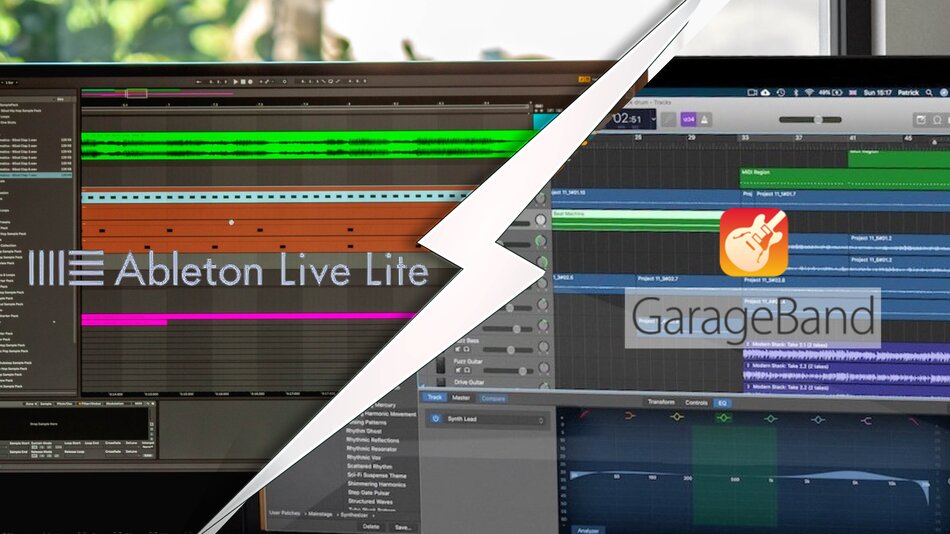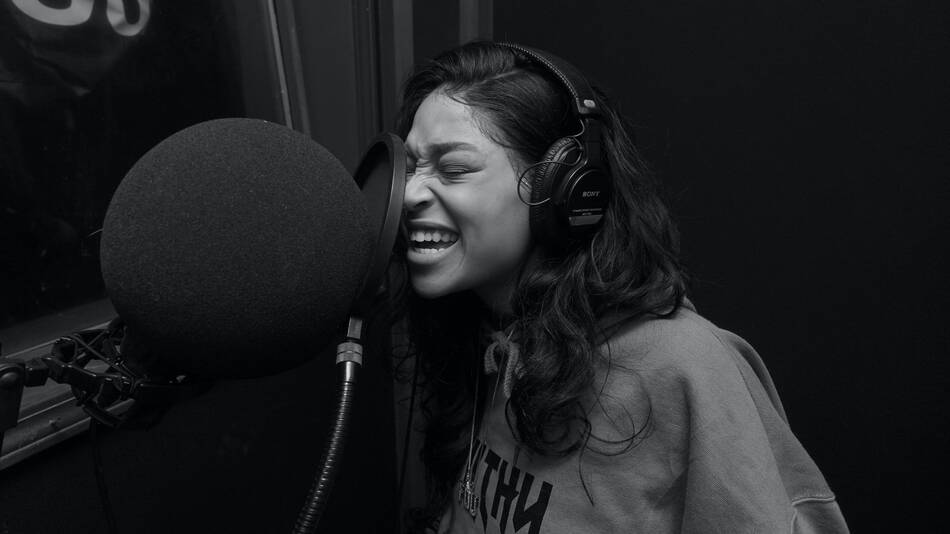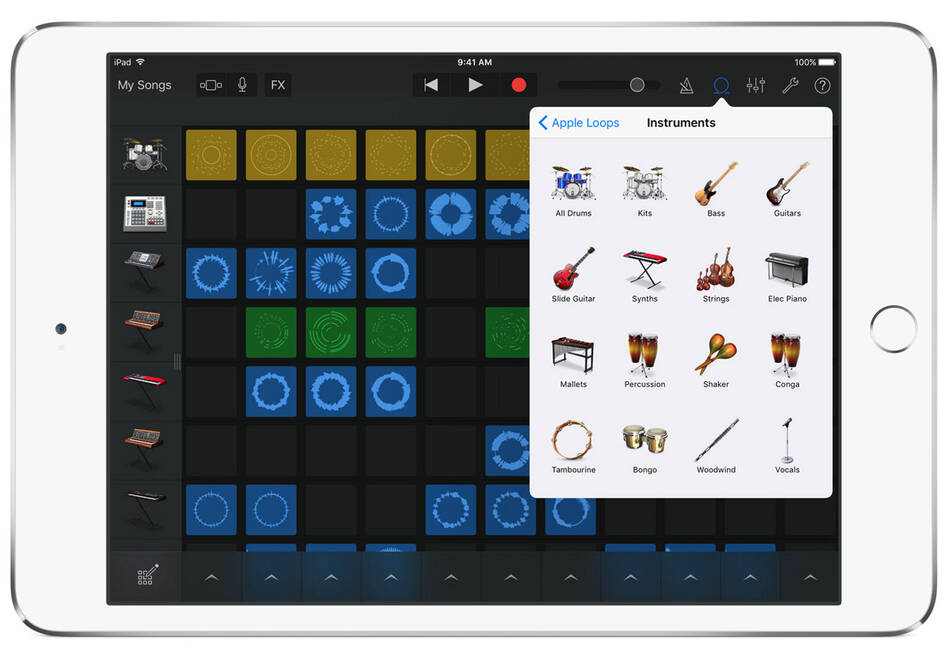
Ableton Live and Logic Pro X is two of the most popular Digital Audio Workstations available today. They are both used by many professional music producers worldwide and have a dedicated community around them, especially Ableton.
Fortunately, both DAWs have a free version that serves as a starting point for many beginner producers. Garageband is the entry-level version of Logic Pro X. It is available for free on Mac. Ableton Live Lite is the free version of Ableton Live. It is bundled with some third-party music gears such as audio interfaces and MIDI controllers and software.
These are two DAWs, which are a great starting point for beginners. However, both Ableton Live Lite and Garageband have their strengths and weaknesses. And this article will help you decide which one to go for.
So what’s the major difference between Ableton Live Lite and Garageband? If you are looking to produce music and perform them live, Ableton Live Lite is a better option because it has unique features that make it excellent for the studio and on stage. However, Garageband is a much complete DAW for music production with decent stock instrument plugins, audio effects, and sounds, and fewer limitations than Ableton Live Lite.
Let me walk you through some of Ableton Live Lite and Garageband’s features and limitations and make a head-to-head comparison between the two. This will, overall, help you choose the better DAW for your needs.
Table of Contents
Number of Tracks
For those who don’t know, tracks in a DAW host the MIDI data (or clip) or audio data combined to make music. Because both Ableton Live Lite and Garageband are free entry-level DAWs, they come with some limitations, and the number of tracks is one of them.
However, Garageband is the clear winner when it comes to the number of tracks provided. You will find out why in a moment.
Ableton Live Lite
Ableton Live Lite offers up to 8 Audio and MIDI tracks. This, honestly, isn’t a lot. A lot of expert producers will find 8 tracks very limiting, especially EDM producers. That’s because EDM requires a lot of layering and dynamic changes in different sections of the songs.
However, for a beginner producer, 8 tracks are good enough. That’s because you will be making simple beats when you get started. But once you get better at producing, you may need to upgrade to Ableton Live Standard or Suite.
But before you upgrade, there are some tricks on how to make the most out of Ableton Live Lite and Intro, regardless of its limitations. I recommend you check it out here.
Garageband
Garageband offers up to 255 Audio and MIDI tracks. This is why I mentioned earlier that Garageband is the clear winner when it comes to the number of tracks. 255 tracks is more than enough to make a complete song for most producers in many genres.
You have enough tracks to program drums, keyboard parts, guitars, bass, synths, and record vocals. It is rare that you’ll ever surpass the 255 track limit unless you record an orchestra or you are Jacob Collier 😀
Stock Instrument Plugins and Sounds
When it comes to stock instrument plugins and sounds, Garageband is a clear winner once again. Let’s find out why.
Ableton Live Lite
Ableton Live Lite offers only four instrument plugins — Drum Rack, Simpler, Impulse, and Instrument Rack. Simpler is a stripped-down version of Ableton’s Sampler plugin. It gives you the essentials you need to make instruments out of samples. However, it’s not as powerful as Sampler.
Drum Rack and Instrument Rack are really helpful tools for music production and live performance. Instrument Rack, for instance, allows you to change sounds automatically during live performances, and they are also great for layering multiple sounds — a feature EDM producers really love.
However, Ableton Live Lite lacks a software synthesizer and an acoustic instrument-based plugin such as a piano, bass, or guitar plugin. Such a bummer.
Ableton Live Lite also provides over 1500 sounds, including one-shots, loops, prebuilt instrument racks, audio effect racks, and more. This sums up to a little over 1.5Gb of Data.
So, overall, Ableton Live Lite offers some essential sounds for you to get started immediately.
Garageband
Garageband provides over a hundred instruments and sounds, from vintage EPs, pianos, guitars, organs, orchestral instruments, synthesizers, and many more — all for free.
To get all of these libraries on your computer, you have to download all the additional sounds for Garageband. Depending on your internet speed, this might take a while.
The additional sounds and libraries are over 25Gb of data, including loops, one-shots, additional patches, and drummers. This gives you so many options compared to Ableton Live Lite.
MIDI
When it comes to MIDI and MIDI composition, Ableton is a much better DAW compared to Garageband. This is an important factor to consider, especially for Hip-Hop and EDM music producers who rely heavily on MIDI to make beats.
Ableton Live Lite
The first thing that makes Ableton great for MIDI is that it integrates very well with some of the well-known MIDI controllers. Once you plug in a compatible MIDI Controller such as the Novation Launchkey Mini MK3 (Amazon) or the Akai MPK Mini (also on Amazon), it automatically maps to Ableton’s Transport Controls, Drum Rack, Volume and Pan, and more. This helps you make music much quicker.
Also, Ableton Live Lite gives you 8 MIDI effects, including an Arpegiattor, Note Length, Pitch, Velocity, and more. And you can combine two or more of these effects together to generate unique MIDI ideas you wouldn’t come up with yourself. This helps with writer’s block when composing.
Ableton recently added a new feature called Capture MIDI. This feature records all the notes you are playing on a MIDI controller even when you are not recording. Once you come up with an idea you like, you can access the captured MIDI notes, grab that idea, and put it in a MIDI track. With this feature, your ideas won’t go missing again.
Garageband
Garageband has no MIDI effects like Ableton. Although you can use a MIDI controller for Garageband, you will have to manually map everything for it to work. Manually mapping MIDI controllers in Garageband is a very tedious process, so that’s a disadvantage.
Both DAWs allow you to play and record MIDI notes using your computer’s keyboard. Garageband calls this feature Musical Typing, and that is very handy.
Also, you can draw MIDI notes in a MIDI or software instrument track in both DAWs. The process is fairly similar. So when it comes, drawing MIDI notes, there is no winner.
Recording

Recording vocals, guitars, or any instrument into a DAW is certainly one of the most important things to consider when choosing a DAW. Although it’s very simple to record in both DAW, Garageband has the edge over Ableton when it comes to recording. Here is why.
Ableton Live Lite
Ableton Live makes it very simple to record audio into the DAW. Simply click the Record Arm button to activate it, and then start recording.
However, because you are allowed to have only eight tracks in Ableton Live Lite, you can only record eight audio tracks at once in Ableton Live Lite, which isn’t a lot.
Also, recording multiple takes in Ableton is very inconvenient because they don’t have a feature that caters to multiple takes.
Garageband
On the other hand, Garageband allows you to record as many multiple audio sources as you want, depending on the inputs of your audio interface.
Garageband has a feature that makes it easy to record multiple takes. After recording, it’s easy to choose different from the several takes and combine them. This cannot be easily done in Ableton, but it’s possible.
Audio Editing and Manipulation
Ableton Live is the winner when it comes to audio editing and manipulation. It has really advanced audio editing features that blow Garageband out of the water. Here is why.
Ableton Live Lite
One of the many features that made Ableton very popular is its audio editing and manipulation capabilities. It’s extremely easy to edit audio, whether recorded or imported.
You can easily zoom to a section of audio, select a portion, and delete. This is particularly when you are cleaning out the sample and getting rid of all unnecessary parts.
Ableton also has complex time-stretching algorithms that allow you to speed up or slow down a sample without noticing any distortion. This complex algorithm is exclusive to only Ableton, and you will find it hard to achieve the same results in other DAWs, including Garageband.
Another audio editing feature that makes Ableton stand out is known as warping. Warping allows you to time-stretch small portions of an audio without affecting the entire audio.
This is a helpful tool to quantize some parts of your performance to the grid or to make some notes longer in some portions. This was only possible in MIDI, but warping makes this possible in audio as well.
If you want to create music from samples, then Ableton Live Lite is the way to go. Ableton allows you to load a sample into a track and chop it into a Drum Rack. You can then trigger the chopped samples with a MIDI controller.
You can make an entire song by rearranging a sample and making it your own in a matter of minutes in Ableton.
This is one of the reasons why EDM and Hip-Hop producers love Ableton so much.
Garageband
Working with audio in Garageband is also a simple process. It’s easy to zoom in, cut, and delete some portions of audio you don’t need. Similarly, you can time-stretch audio and adjust it to the tempo of the Garageband project.
However, you will notice the audio distorting when you time-stretch the audio. That’s because Garageband doesn’t have a complex time-stretching algorithm.
Garageband doesn’t have any warping features — you can’t time-stretch certain portions of audio. Also, you can’t easily make sample-based beats inside Garageband. It will require you to install third-party sampler plugins inside Garageband.
Automation
Automation is one of the essential things to have in a DAW. It allows you to automatically change things such as the volume of an instrument, panning, turns on/off effects, etc. Automation helps you change the dynamics of a song at any time.
It is very easy to automate in both DAWs, but Ableton makes it much simpler and has some unique features. So, Ableton is the clear winner here.
Ableton Live Lite
To toggle on/off Ableton’s automation, press the A key on your keyboard. Garageband also uses the same shortcut button for automation.
To automate a parameter in a track, simply click on that parameter, and then the automation curve of that parameter will be shown in the track. For instance, if you want to automate the Pan on a track, Press A to toggle on automation, and then click on the Pan button of the track.
The Red Line shown on the track will be the automation curve of the Track Pan, and then you can edit it from there. It’s a very easy process in Ableton.
Ableton also has Macros. Macros exist in Drum Rack, Instrument Rack, and Audio Effect. They allow you to assign multiple controls to one knobs. Which means, once you automate that one button, all the assigned parameters will automate as well.
This is a very cool feature, especially for DJs who want to control multiple parameters with a single control. That’s just one example because there are multiple ways to use Macros.
Garageband
Automation in Garageband is very similar to Ableton. You have to press A to toggle on automation and then select the parameter you want to edit in a drop-down menu. Once you select the parameter, the Automation curve for the parameter will be shown on the track. You can now edit it however you want.
Mixing

Honestly, both Ableton Live Lite and Garageband have certain limitations when it comes to mixing. Both DAWs suck at mixing. You will understand why in a moment.
Ableton Live Lite
Ableton Live Lite comes with 14 audio effects, including an Auto Filter, Reverb, Simple Delay, Compressor, Chorus, Audio Effects Rack, and more.
The selection of plugins is just not enough to create unique sounds or make a professional-sounding mix.
Also, Ableton Live Lite lacks a useful EQ plugin, which is essential for a good mix. You’ll need to upgrade to the Standard or Suite Edition to get Ableton’s EQ Eight plugin, which is the standard EQ effect plugin for Ableton.
Both DAWs don’t have a dedicated mixer, so effects are added directly to each track. One advantage Ableton has over Garageband when it comes to mixing is, you can add an unlimited number of audio effects on a track in Ableton.
Also, in Ableton, you can group multiple tracks and mix them together.
Garageband
Garageband comes with hundreds of audio effects, and they are categorized under Amps and Pedals, Delays, Distortions, Dynamics, EQ, Reverb, Modulation, and so much more.
There are multiple effects under each category, meaning you will find something to make your sounds more interesting. Also, depending on your skill level, you can mix a professionally sounding song in Garageband using only stock audio effect plugins.
You can also add unlimited plugins to a track in Garageband. However, keep in mind, the more effects you add, the more CPU heavy the track becomes. We’ll talk about CPU usage in the next section.
However, the downside of Garageband is you can’t group multiple tracks and mix them in Garageband — bummer.
CPU
How a DAW handles your computer’s CPU is extremely important. How a DAW handles the CPU will either make or break your music production.
Ableton Live Lite
Ableton is designed to use less CPU processing power. Its minimalist design was purposely to reduce CPU usage for processing graphics. This is why Ableton has a flat design with simple buttons and knobs.
Also, the Freeze Track feature in Ableton reduces your computer’s CPU usage by converting MIDI clips into audio clips. This is a helpful feature, especially when you have many CPU heavy instruments and audio effects on a project.
Garageband
Garageband is also a very CPU friendly DAW. However, the graphics of instruments and audio effects require a bit of processing power.
Garageband also has the Lock Track, which is similar to Ableton’s Freeze Track feature. The Lock Track also reduces the CPU usage of instruments and effects. Very handy
Loop-based music production

Besides the traditional “timeline-style” of music production, Ableton made loop-based music production popular with their Session View. Now, this concept has been adopted by several app makers, and not long ago, a feature called Live Loops was added to Garageband, which is just like Ableton’s Session View. Live Loops is only available on the iOS version of Garageband, however.
In terms of music production, both DAWs work the same way. Garageband did a great job “copying” Ableton Live’s session view and workflow. So, there is no winner.
However, Session View in Ableton is capable of so much more. There are lots of advanced features built into Ableton Live’s clips in Session View. It can be used for automation, changing presets during live performances, turning on and off effects, and so much more. So, overall, Ableton Live Lite is the winner because it offers more functionality than Garageband.
Which one is best for you? My opinion
If you produce Hip-Hop, or EDM, or any genre that relies heavily on MIDI and audio manipulation, you should go with Ableton Live Lite.
However, you should be aware of its limitations, lack of software instruments, and audio effects. You can definitely use third-party instruments and audio effects to make up for that.
If you will do a lot of audio recordings such as vocal or guitar recording, and produce music more traditionally using live instruments, Garageband is the perfect DAW to start with.
It has a few limitations, gives you a ton of tracks to work with, more instruments and audio effects so you record, mix, and master your songs without any third-party plugins. But, of course, you can still use third-party plugins inside Garageband.
Conclusion
Ableton Live Lite’s restrictions are an effort by the company to get more users to upgrade to the Standard or Suite Edition as soon as possible. This is why it has so many limitations.
On the other hand, Garageband is a free DAW made by Apple for its users who want to get into producing music. Although there is a more advanced version of Garageband, which is Logic Pro X, the free version offers you more than enough features to produce, mix, and master music.
So, in a nutshell, Garageband is the better option compared to Ableton Live Lite.
Hope you found this article quite useful. After reading this post, you may also want to check out my article where I compared Ableton Live and Cubase. If you’re still looking to choose a DAW, Cubase may be an excellent choice for you based on your needs. So I highly recommend you check this article out.

Hi, I’m Raymond. A keyboard player, music producer, and writer. And I’m also the founder of this blog. As someone who has been working with several audio and music equipment and different musicians for many years, my goal is to answer all your questions on music and equipment, as well as the latest music software and technology. For more info, check out my about me page
